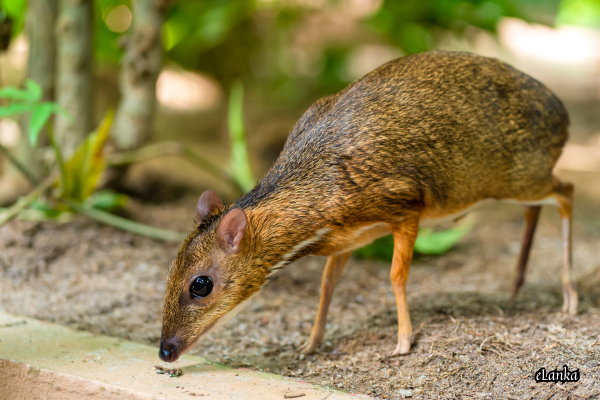Mystical Mouse Deer: Fairies of the Nocturnal Forest – By Nadeeka – eLanka

Deep within the shadowy realms of the tropical forests, a tiny, elusive creature glides through the underbrush, barely making a sound. The mouse deer, also known as the chevrotain, is a mystical being of the night, often referred to as the “fairy of the forest floor.” With its delicate frame, gentle movements, and nocturnal habits, this enchanting animal has fascinated nature lovers and scientists alike for centuries.
A Creature of Ancient Lineage
The mouse deer belongs to the Tragulidae family and is considered one of the oldest surviving ungulates, dating back over 30 million years. Despite its name, it is neither a deer nor a rodent. Instead, it is a unique species of small hoofed mammals, bridging an evolutionary link between early primitive ungulates and modern-day deer.
Where Do Mouse Deer Live?
These secretive creatures inhabit the dense forests of Southeast Asia, Sri Lanka, and parts of Africa. They prefer environments rich in vegetation where they can remain hidden from predators while foraging for food. Due to their small size, they are vulnerable to a variety of threats, making dense forest floors the perfect refuge.
Physical Features and Behavior
-
Size & Appearance:
Mouse deer are the smallest hoofed mammals, with some species weighing only 1.5 to 2.5 kg (3-5 lbs). They have slender legs, a rounded body, and large, expressive eyes that give them a fairy-like charm. -
Diet:
These nocturnal herbivores feed on fruits, leaves, fungi, and fallen flowers, playing an essential role in forest ecology by helping with seed dispersal. -
Silent Wanderers:
One of the most remarkable aspects of mouse deer behavior is their ability to move silently. They use their delicate hooves to tread lightly, often escaping unnoticed even when close to predators. -
Solitary and Shy:
Unlike their larger deer relatives, mouse deer are solitary creatures that prefer a quiet, undisturbed existence. They communicate using subtle body language and faint vocalizations.
Legends and Cultural Significance
Throughout history, the mouse deer has been woven into folklore and mythology. In Sri Lanka and Malaysia, the mouse deer appears in folktales as a symbol of intelligence and cunning, often outsmarting larger predators with its wits rather than strength. Many indigenous communities regard it as a spiritual animal, believing that spotting one is a sign of good luck.
Threats and Conservation
Unfortunately, mouse deer populations face several threats, including:
- Deforestation – Habitat loss due to logging and land conversion.
- Poaching – Hunted for meat and traditional medicine.
- Predation – Vulnerable to natural predators such as leopards, civets, and large birds of prey.
Several conservation organizations are working to protect these fragile creatures through habitat restoration, anti-poaching laws, and wildlife reserves.
The Future of the Fairy of the Forest Floor
Mouse deer may be small in size, but their role in maintaining the balance of the forest is immense. As nature’s silent wanderers, they remind us of the delicate beauty hidden within the wilderness. Protecting these enchanting creatures is not just about saving a species but about preserving the magical mystery of the forests they call home.



















